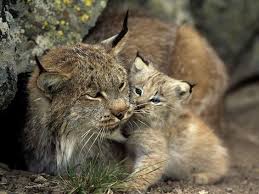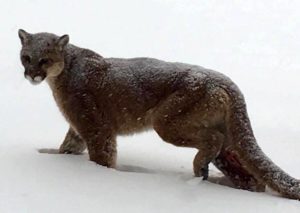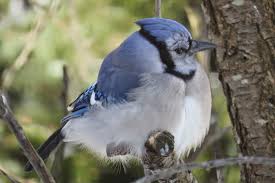
Back on December 30th, a lynx was spotted at Purgatory Ski Resort in Durango. It’s worth watching the video that exploded across social media to marvel at the gorgeous animal sauntering by dozens of stunned skiers and snowboarders. At the time, a spokesperson from Colorado Parks and Wildlife (CPW) stated that the animal may not be well since it was acting atypically. Unfortunately, last week there was an article in one of our local newspapers about how this same lynx was found dead, assumedly of natural causes. Although lynx sightings occur regularly in Southern Colorado, what are our chances of spotting one of these beautiful cats?
The shoddy reporters on the Web repeatedly state that Lynx were once EXTINCT in Colorado. I’m sure the followers of this column shook their heads knowingly. Lynx were an EXTIRPATED species, meaning they no longer lived here but still existed in the wild elsewhere. Fact: In 1999, the CPW began to reintroduce lynx in the San Juan Mountains, which is in the southwest. It is estimated that there are now between 150-250 lynx thriving across our state. The RMNP’s website shows a photo of a lynx and notes that they are found in the Park, although at present none are known to be permanent residents. So, since there is a chance of seeing a lynx—however slight—it’s always wise to get some learning under our belt.
There are four species of lynx; the aptly named Iberian (or Spanish) and Eurasian lynx are found guess where? The bobcat roams the lower 48 states, while the Canadian lynx is found in the remote northern forests of North America. The bobcat is snow-challenged since it doesn’t have fur on its soles, so don’t plan on seeing one in Grand Lake. But, our winter wonderland is perfect for the Canadian lynx since they love cold, snowy places that have a high density of their favorite meal, the snowshoe hare. They are so dependent on the hares, the lynx’s population ebbs and flows in direct correlation to an area’s snowshoe hare population, which tends to plunge every ten years. Although, if absolutely necessary, lynx will eat voles (yeah!), mice, squirrels and birds.
Canadian lynx are covered in very thick, spotted fur that is light brown in the summer and grey in the winter. They have unusually large paws that act as snowshoes, which is probably why they’re pretty bad runners. Instead, their hunting style is to hide and ambush. Their most unique traits are the black tufts on the tip of their ears and their stubby, bobbed tail (hence, how that wimpy species, the bobcat, was named). Lynx are very vocal, sounding cat-like with meows, purrs, and a method of communication that only cat lovers find endearing, hisses.
No matter your political bent, it’s been a stressful few months. Enjoy the accompanying photo; we all need a little sweetness in our lives. And, maybe just maybe, you’ll be one of the honored few who spot a Canadian lynx this frigid winter!
Originally published in The Boardwalk newspaper, Grand Lake, Colorado.

